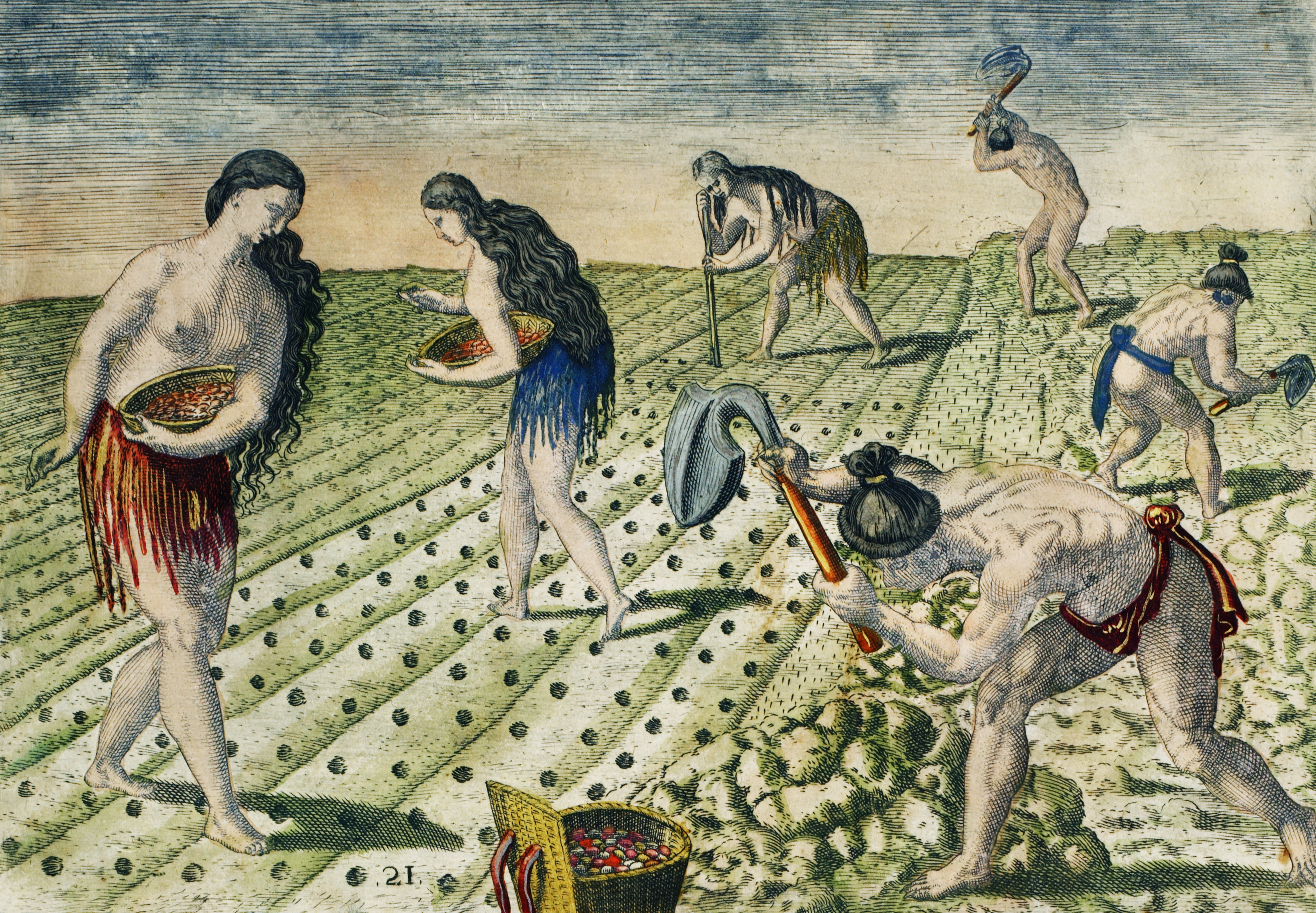
Its solution of selected elements ensure ecological balance, an uninterrupted cycle of living and non-living material. A perfect system, a holistic perpetual-motion machine, created by people in partnership with nature. Is permaculture the key to producing healthy food in a time of ecological crisis?
Do you remember those times during the summer holidays when you’d spend the whole day in your courtyard, building treehouses, playing football, mumblety-peg, hare and hounds – and when the concept of boredom didn’t exist? It was 1996, I was 13, and like most of my peers I was dreaming about what interesting things I’d do on the following summer day. From today’s perspective, I can confidently state that I wasn’t a typical teenager. I differed from my friends in how I spent a lot of time with pet fish, and with sci-fi and fantasy books. I often hid away in my ‘secret’ base, reading the works of one of my favourite authors: Arthur C. Clarke. That summer my imagination was entirely captivated by The Sands of Mars. The story is set at the start of the 21st century. It tells the story of the flight of the rocket Ares, and the trials and tribulations of the first colonizers, working on terraforming the Red Planet.
The book, published in 1951, was written so realistically that when reading it, I was transported in my mind to an isolated Martian base, where the creation of a range of technological solutions (making oxygen-using green plants, using priceless water in a closed system, cultivating food in the barren Martian soil) was essential for the survival of the entire colony. What was for me the creativity of science fiction is today taking on real dimensions and shaping life on Earth. But already back then, a debate was ongoing about global problems such as global warming, pandemics, shrinking natural resources, species extinction and natural disasters on an unprecedented scale.
Because life isn’t science fiction
Call to mind the great environmental catastrophe that hit North America in the Dirty Thirties. A harsh drought in the Dust Bowl plunged the entire world of the day into an economic, social and ecological crisis, and it was entirely the responsibility of humans and industrialized agriculture. As a teen, I was already aware of similar threats, and I wondered whether our civilization could choose a course allowing it to get off the path leading to a planetary holocaust. More or less at the same time, I got hold of a photocopy of Patrick Whitefield’s article “Trees Among the Wheat” from Britain’s Permaculture Magazine. The author described an unusual type of farming, in which wheat is cultivated between rows of productive fruit trees, but with the intention that as soon as the trees mature and start to produce stable fruit crops, the cultivation of wheat will no longer be needed. This no-till system was supported by animals, who complemented this sustainable agricultural ecosystem by closing the cycle of nutrients in the soil – differently from how it’s done in industrial cultivation of single crops, requiring mechanical equipment for the annual tillage, which is a straightforward recipe for deserts. But when we convert farming into multi-year cultivation (e.g. the edible chestnuts growing on trees, which in terms of their content of amino acids, proteins, vitamins and minerals could completely replace rice or wheat, it’s enough to plant them once and they produce fruit for hundreds of years!), we maintain a stable system of food production without the need to plough, or to use heavy equipment powered by fossil fuels.
In the article, this cultivation method was called agroforestry. It’s a method based on creating productive trees, in between which vegetables, herbs or crops are cultivated without tilling, and domestic animals are pastured. This makes it possible to produce food with all the necessary nutrients, without the need to degrade the soil and local ecosystems. We’re able to create similar solutions with permaculture design. Supporting it with agroforestry, we can produce food and simultaneously regenerate the areas of the earth that have been degraded by human activity.
What is permaculture?
Permaculture (‘permanent agriculture’) is the science of designing and creating self-sufficient habitats that imitate the natural world in their structure and functioning. The basis for the permaculture approach is a philosophy that assumes cooperation with nature, rather than working against it. A great deal of stress is placed on carefully examining the potential of a given location, the context of its ecological, economic and social functioning, as well as the natural cycles of matter and energy flows. Permaculture design is a complex, dynamic system of tools allowing the construction and use of human habitats (e.g. cities, settlements, farms, eco-villages) that ensure high comfort of living with simultaneous care for the natural environment, which we are a part of, after all.
In the mid-1970s, the Australians Bill Mollison and David Holmgren started work on developing stable agrosystems. This was a response to the fast developing system of industrial farming, which already at the time was recognized as the main cause of water contamination, reduction of biodiversity, and the erosion of billions of tonnes of soil from once-fertile areas. They announced their permaculture manifesto in 1978, publishing the guide Permaculture One. As Mollison writes there, by using the principles of permaculture design, we can create living systems that are “ecologically sound and economically viable, which provide for their own needs, [and] do not exploit or pollute.” So permaculture is a holistic approach to creating our closest surroundings.

Here’s a list of key ethical rules for this field:
1. Earth care
The Earth is a single living organism (James Lovelock – the Gaia hypothesis). Humanity is a part of this superorganism, an integral element of the network of connections that determine the proper functioning of the entire planet. The primary goal of our existence on Earth is to rebuild the evolutionarily-shaped mechanisms of sustaining life, which have been destroyed by centuries of human ignorance and neglect. It boils down to a simple conclusion: live in such a way as to leave our planet in the best possible shape for future generations.
2. People care
Cooperation, not competition; working together to create a sustainable civilization, stressing the creative development of humans in the environment, not divorced from nature, in equality with all other species that inhabit out biosphere. “We do not inherit the earth from our fathers, we are borrowing it from our children,” as Antoine de Saint-Exupéry wrote. This rule boils down to caring for ourselves, but also for all of those around us: care for good relationships and care for creating spaces that strengthen those good relationships.
3. Sharing the surplus
It’s all about rational management of our planet’s limited (depleted) resources. This principle assumes a halt to our development, the growth of the human population and the rate of consumption of Earth’s natural resources, as well as redistribution of the crops/products/services developed by diversified permaculture systems.
Let’s pause on this third principle. Already as a teenager, I was asking what I had too much of, and what I could share. It turned out that although at the time I didn’t have much, I did have an excess of something that others didn’t attach much importance to.
I had an excess of organic waste from the kitchen, and slightly contaminated water after each bath. It was enough to approach these two resources just a little more creatively. So on my balcony I built a living ecosystem, which turned organic kitchen waste into the compost needed to cultivate vegetables, and purified the grey water from my bathroom. These solutions allowed me to create almost 60% of the food I needed, in the form of vegetables and mushrooms, in a space of 7.5 square metres, and to use the purified water for my balcony crops and a small forest garden of food crops, which I planted instead of grass below my balcony. If every resident of the city introduced these two solutions, we wouldn’t have problems with methane or nitrogen oxides escaping from landfills, soil erosion, drought and water shortages, urban food deserts or the health problems related to rubbish food products. Let’s sum up with a quote from the classic: “Although the problems of the world are increasingly complex, the solutions remain embarrassingly simple.”
Translated from the Polish by Nathaniel Espino









